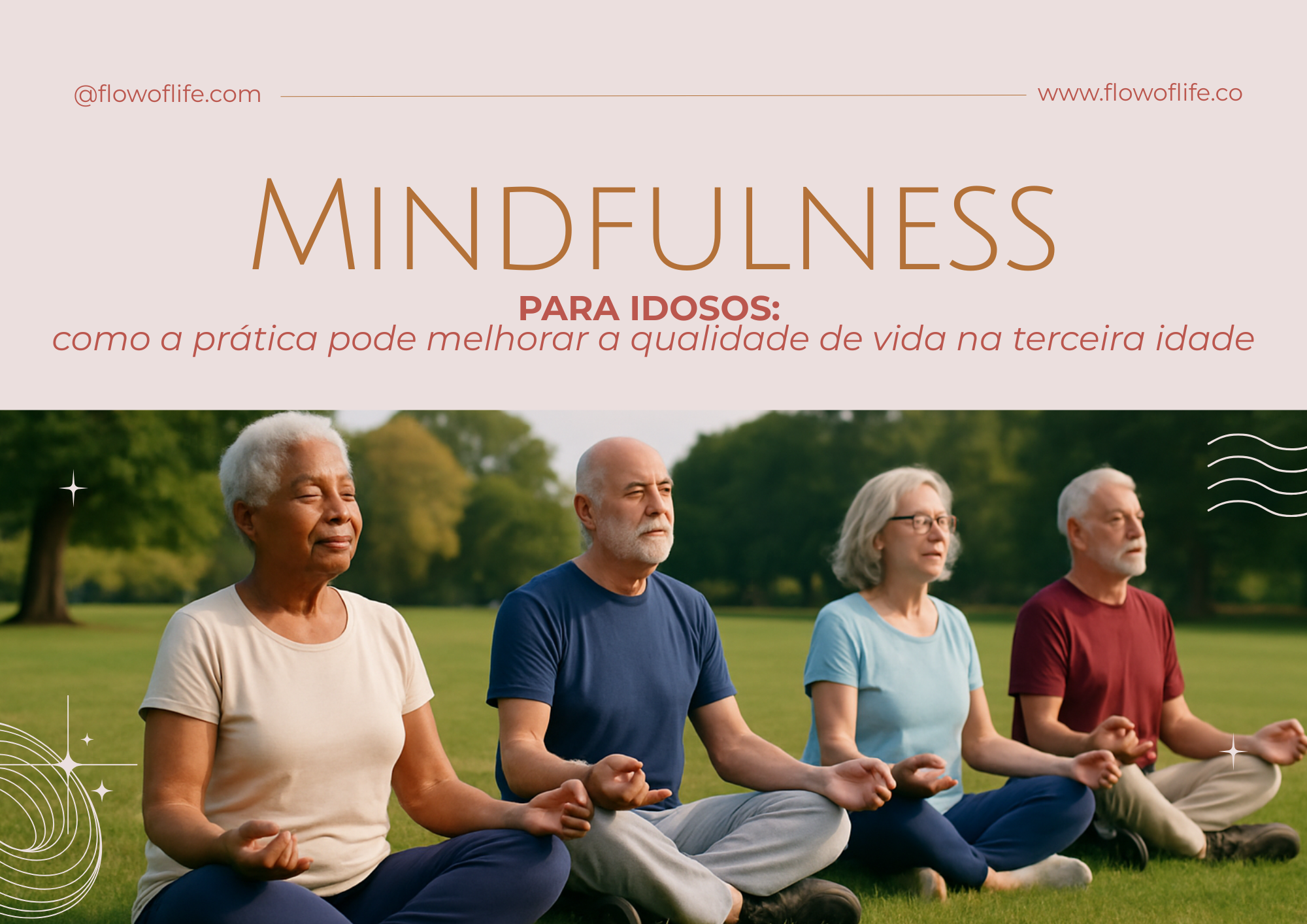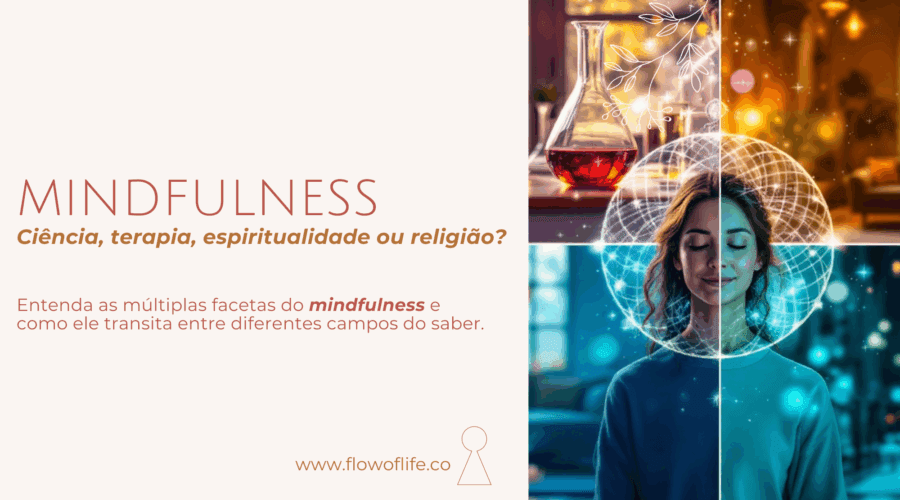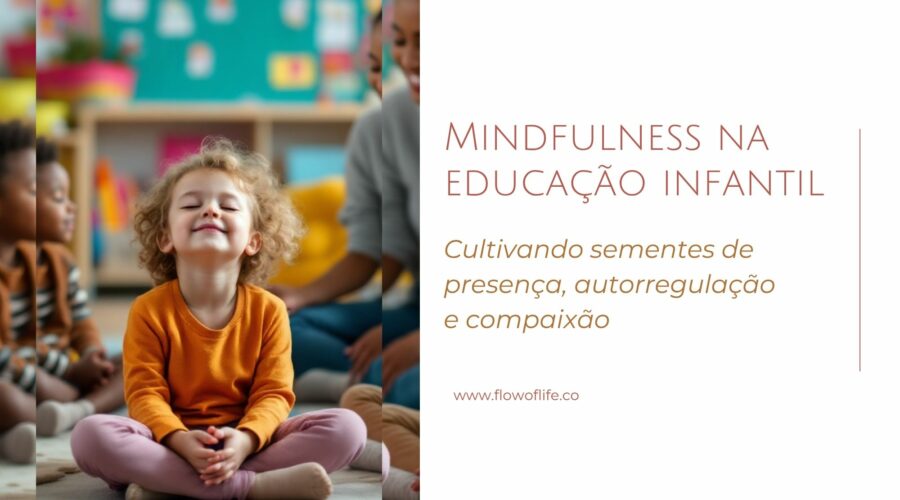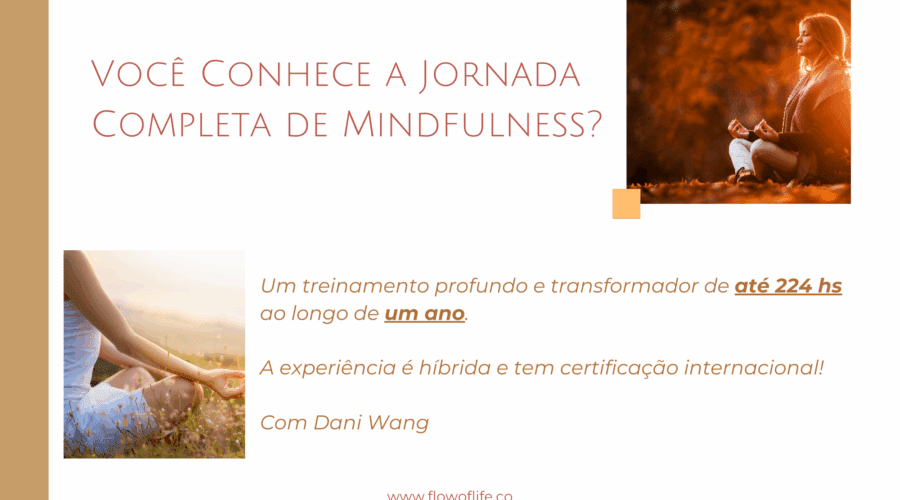Ageing is a multifaceted phenomenon that involves physical, cognitive, social and emotional transformations. Although longevity is an achievement of medicine and public policy, it still brings with it significant challenges related to quality of life in old age. In this context, practices such as Mindfulness have gained prominence as promising resources for promoting health and well-being among the elderly.
Mindfulness can be understood as the ability to be attentive to the present moment, with awareness, acceptance and without judgment (Kabat-Zinn, 1990). By practicing Mindfulness, individuals learn to deal with their emotions and thoughts in a more flexible way, reducing reactivity and increasing emotional resilience. For the elderly, this skill can be especially relevant, since this stage of life is often marked by loss, physical limitations, loneliness and accumulated stress.
A narrative review conducted by da Silva and Assumpção (2018) analyzed the impact of the practice on the quality of life of the elderly, based on a selection of national and international studies. The results show that it is associated with a significant improvement in psychological and physical well-being, including a reduction in symptoms of anxiety and depression, improved quality of sleep and attention, as well as a reduction in the perception of stress. The study highlights that Mindfulness contributes to the recontextualization of experiences and the strengthening of emotional regulation. These are fundamental aspects for successful ageing.
Complementing this evidence, Morone, Greco and Weiner (2008) carried out a randomized clinical study with elderly people suffering from chronic low back pain. The intervention based on Mindfulness meditation showed positive results both in the perception of pain and in the functionality and quality of life of the participants. The authors observed that the group who practiced Mindfulness reported less interference from pain in their daily activities, even without significant changes in the intensity of the pain itself. This suggests that the practice not only modifies the experience of pain, but also transforms the way it is interpreted and faced.
Both studies converge on the same conclusion: Mindfulness is an effective, accessible and applicable tool for the elderly population, with the potential to reduce emotional suffering, improve functional cognition and promote greater autonomy and well-being. Although it is not a unique or miraculous solution, meditation appears to be a valuable complementary resource, capable of strengthening the subjective aspects of quality of life: especially the perception of control, acceptance and meaning.
What's more, the practice is adaptable: it can be done sitting, lying down or walking, in short sessions, respecting the physical condition of each elderly person. When integrated into social groups, long-term care institutions or even within the family, it becomes even more powerful by fostering social bonds, empathetic listening and a sense of belonging.
Given the growth of the elderly population in Brazil and around the world, there is an urgent need to create care strategies that go beyond the traditional biomedical model. Mindfulness presents itself in this scenario as an approach centered on being, presence and awareness, helping to ensure that ageing is not just synonymous with survival, but with a life lived with dignity, clarity and inner peace.
Try these Mindfulness practices today to improve your everyday reality:
1. Conscious breathing practices (2 to 5 minutes)
Purpose: to regulate the nervous system, promote calm and presence.
How to do it: sit comfortably, with your spine as straight as possible, and focus on your breathing. Notice the air entering and leaving your nostrils. There's no need to control your breathing... just feel the natural spontaneity of the air sweeping through your nostrils.
Adaptations: can be done seated with postural support or even lying down. You can use anchor phrases such as "breathing in, joy of life... breathing out, peace and tranquillity".
2. Guided meditation with audios
Objective: to encourage states of relaxation and introspection.
How to do it: access the recordings on the Flow of Life channels available at Spotify or YouTube.
If you're going to meditate at home and don't want to be interrupted for the next few moments, start by finding a comfortable posture. Then start the meditation audio and direct your attention to your body, breath and emotions, allowing yourself to be totally present during the practice.
3. Mindfulness in everyday life
Objective: to transform simple activities into moments of presence simply by bringing your attention to an anchor of presence, usually associated with one of the five senses.
Examples:
Take a bath feeling the water running down your body with mindfulness.
Eat fruit slowly, taking in the texture, smell and taste.
Walk paying attention to your steps, body movement and breathing.
Listening to nostalgic music with total presence, letting your emotions come out and feeling them in your body.
These practices make the ordinary extraordinary! An afternoon tea, made with attention and affection, is also a form of meditation.
4. Compassionate listening circles with conscious silence
Objective: to strengthen bonds and encourage emotional acceptance.
How to do it: in a group, each senior can speak (or remain silent) about how they are feeling that day. The others listen without interrupting, judging or commenting. There may be a brief final silence to integrate what has been said and how it affects the listener.
Therapeutic potential: creates belonging, values speaking and listening, and can prevent loneliness and depressive symptoms.
5. Gratitude and emotional memory activities
Objective: to strengthen positive feelings and raise self-esteem.
Practical examples:
Write or tell about 3 moments of joy in your life.
Create a "memory book" with photos, objects and personal stories.
Sharing good memories in a group (with themes such as childhood, parties, friendships).
According to studies, practices of gratitude and reconnection with meaningful memories help to reduce negative rumination and increase the sense of purpose (Silva & Assumpção, 2018).
6. Mindfulness in gentle movements
Objective: to create body awareness by combining movement, breathing and balance.
How to do it: look for slow movements inspired by yoga, tai chi chuan or stretching. Practice them with full attention to your breathing and movements. At the end of each part of the movement, give your body time to adapt to the new position and, in the meantime, feel the physical sensations that echo through your body.
Important adaptation: always respect physical limits, with the support of a chair, wall or the help of trained professionals.
7. Mindfulness for dealing with pain and discomfort
Objective: to reduce the suffering associated with chronic pain.
How to do it: when you feel discomfort or pain in your body, bring a "beginner's mind" to this physical sensation and instead of fighting the pain, the practice invites you to observe it with curiosity. For example: try to locate the center of the pain and notice its shape, temperature and pulse. You might want to name it something gentle and friendly. And just as you would welcome a friend in pain, try to breathe "through" the pain, feeling your body "embracing" and welcoming the discomfort. This changes the relationship with the pain and promotes subjective relief.
Try repeating this anchor phrase: "The pain is here, but I'm here too. I breathe with it. I am not it".
I hope you enjoyed it! Remember that the important thing is... to practice!
For more tips on Mindfulness and longevity, visit our YouTube channel at link




